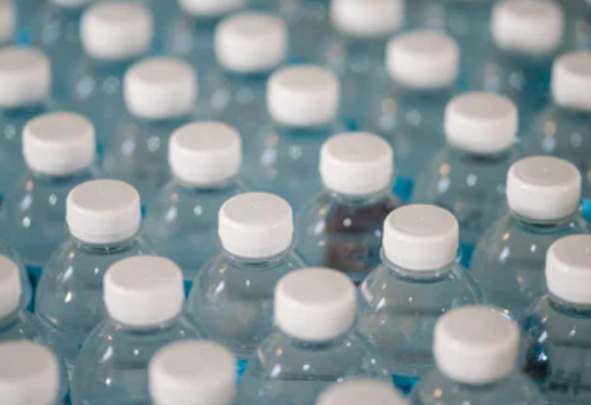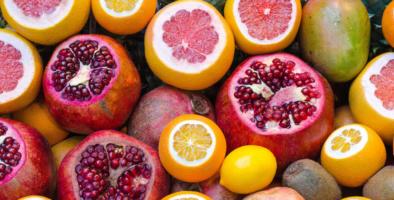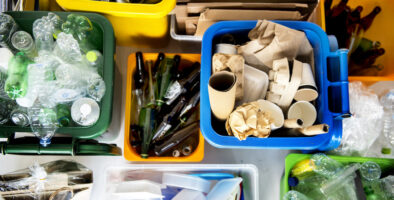As we move into a more diverse range of products including packaging, we wanted to take a closer look at the world of plastic. It is a product which has been a major talking point in recent years, and we have learned that we need to use it in a responsible way to ensure our planet’s health for future generations. However, if used in the right way and managed effectively plastic can be an incredible asset to the food and beverage industry. We are going to start by looking at PET, which is the most common plastic around.
Contents
- What is PET?
- How PET is produced
- Uses of PET
- Quality assurance
- Recycling versus reprocessing PET plastic
What is PET?
PET (Polyethylene terephthalate) is the most common thermoplastic polymer resin of the polyester family and is used in a large variety of different objects such as clothing fibres, food and liquid containers, thermoforming in manufacturing and for engineering resins when used in combination with glass fibres. PET is the most widely recycled plastic across the globe. In the United States however, only 20% of PET material is actually recycled. This raises questions regarding the development of more thorough recycling processes and the development of recycling as a consumer habit.
Most of global PET production (over 60%) is for the purpose of synthetic fibres, whereas bottle production surprisingly accounts for only 30% of global demand. The abbreviation PET is largely used in reference to packaging but in the world of textile applications, its common name ‘polyester’ is used. Polyester is the fourth most commonly used and produced polymer, and makes up around 18% of world polymer production.
PET is commonly recycled and possesses the number 1 as its resin identification code. PET can be both transparent or opaque depending on its processing and thermal history. If PET is amorphous it will be transparent, if it is semi-crystalline it will appear either white or opaque depending on its crystal structure.
In 1940 England, PET was first prepared by John Rex Whinfield and James Tennant Dickson of the Calico Printers Association during a study of phthalic acid. The PET bottle was patented by Nathaniel Wyeth in 1973.
PET Production
PET is produced by the polymerisation of ethylene glycol and terephthalic acid. They get heated together along with chemical catalysts to produce PET in the form of a molten and viscous mass which is then later spun into PET fibres or solidified to be later processed as a plastic.
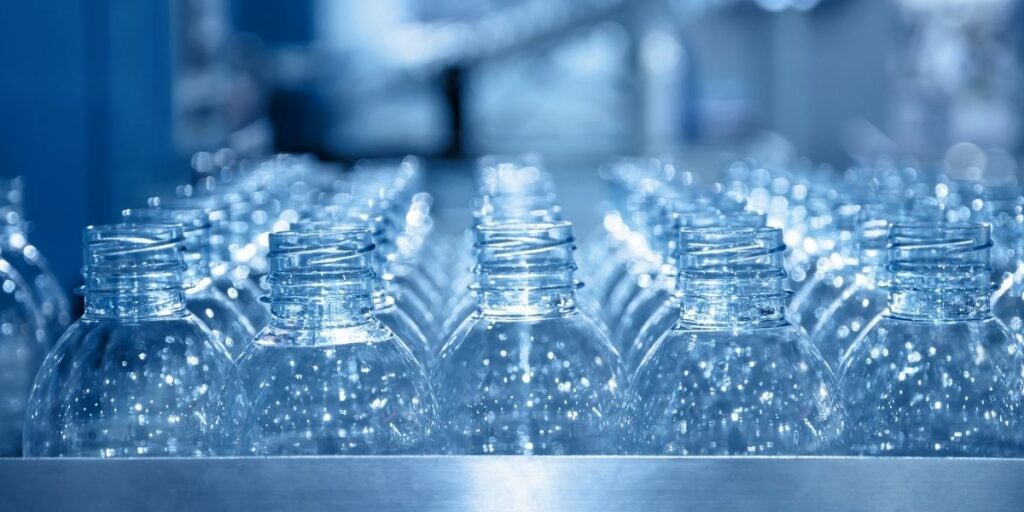
Uses of PET
PET is used in the production of plastic bottles which are widely used for soft drinks. Depending on the certain speciality of the bottle, PET can sandwich an additional (PVOH) polyvinyl alcohol layer to prevent any further oxygen permeability. This is done in the case of bottles designed for beer containment, for example.
PET is also used in the form ‘biaxially oriented PET’. This can be aluminised by evaporating a thin film of metal onto the film to reduce its permeability as well as giving it a reflective quality. These properties are of course useful in multiple spheres including flexible food packaging, thermal insulation and, because of its high mechanical strength, it can often be used in tape applications. PET film can be the carrier for magnetic tape or backing for pressure-sensitive adhesive tapes.
Another form, called ‘non-oriented PET’ can be thermoformed to produced packaging trays and blister packs. These packaging trays can be used for frozen dinners if crystallisable PET is used, as this has the property of being able to withstand both freezing and oven baking temperature changes. Other uses of PET include a substrate in thin film solar cells, waterproof barriers in undersea cables, bell rope tops to prevent wear and tear on ropes as they pass through a ceiling, liner material in composite high pressure gas cylinders, and as a 3D printing filament.
From the short description above, you can begin to see how diverse and useful PET can be. Due to its vast range of properties, it has numerous outputs and uses it is very popular. It has resistance to water, a high strength to weight ratio, is practically shatterproof and has a wide availability as a recyclable plastic, making it a truly formidable commodity. It would not seem too far to say that PET is indeed the world’s most useful plastic.
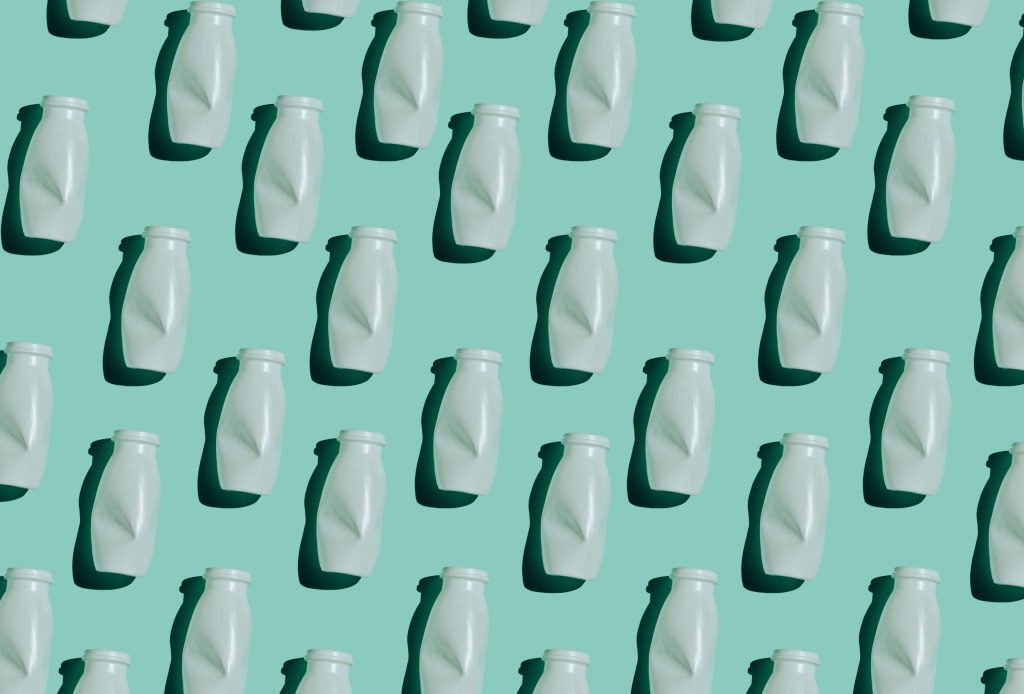
Quality assurance of PET
Quality assurance is at the core of every food product supply chain. It is not just the quality and safety of food ingredients that needs to be managed for success, but the quality and safety of food grade packaging as well.
As a supplier of over 100 food ingredients, virgin and recycled food-grade PET, Czarnikow (CZ) performs quality and safety risk management of food ingredients and food grade packaging for all new and non-standard flows across the globe including containerized, break bulk, co-loading and flows in controlled conditions. As more food and beverage producers try to introduce recycled PET (rPET) into their production lines, it’s important to know what goes into the quality management processes for these plastics.
How do we define food safety and quality management?
We are tasked with assessing the most efficient ways to transport large volumes of product across the world without compromising on safety, quality, legality and authenticity.
Our operations span multiple economic zones and numerous customers with varying requirements for quality, packaging and transport. To efficiently manage this, all products and process flows are assessed against the highest global standards for food safety and quality while simultaneously adhering to regulatory requirements in different regions. Our quality management systems comply with the requirements of GFSI, BRC-GS and GMP+ Standards; these are accepted by the leading food and beverage manufacturing companies around the world. We follow the EU Regulatory Standards for PET and rPET packaging because they are the strictest standards and are accepted by all buyers and suppliers.
Our safety checks
Safety checks of food products centre around preventing shorter term risks whereas safety checks for plastic packaging are more concerned with preventing long term risks that come with ingesting large amounts of plastic particulates. One of the risks associated with food grade plastic packaging is toxic migration which is when particles in the plastic transfer into food. Phthalates are one such example, these are the chemical compounds that make plastic soft, transparent and flexible. High amounts of phthalates in the human body can be harmful. The risk of toxic migration is higher for rPET because it needs it needs to be reprocessed. This brings us to another point: the difference between recycling and reprocessing.
Recycling versus reprocessing PET plastic
‘Recycled PET’ as it’s called in the industry is virgin PET that has been reprocessed to make it fit for purpose. Virgin PET is usually depolymerised, which means it is separated into monomers, then reconstituted into rPET. But there is also repurposing which is when you use the same plastic twice. This is a much harder practice to scale and comes with other issues.
Since PET is a grade 1 plastic, it is suitable for holding food products like oils and drinks, but it is limited in how many rounds of repurposing and reprocessing it can go through before it starts to degrade and is no longer viable for packaging food and drink. More than one round of reprocessing can degrade the plastic, which can increase the amount of toxic migration. To minimise toxic migration, food grade rPET can be fitted with an internal layer of virgin PET. High concern substances like antimony trioxide and bisphenol are tested for repeatedly. Substances of very high concern or ‘SVHCs’ are flagged by the EU’s REACH Regulations which determine the safe limits of SVHCs that can be present in rPET or virgin PET. For this reason, most PET must adhere to REACH requirements.
Another part of quality assurance is delivering a product that suits the client’s needs. It is difficult to restore some of the aesthetic properties of PET, such as durability and transparency. This limits the processing ability of rPET as well as producing rPET that is as clear as virgin PET, which is why some manufacturers decide against using it. RPET is also more costly, given its lesser availability and scale of the rPET manufacturing globally and additional processing steps.
Multiple sourcing meets quality management
The disruptions in supply chains in the last two years have highlighted the need for multiple sourcing arrangements. Various supply chains are under pressure because of a shortage of raw materials due to adverse weather conditions affecting crops and geopolitics stagnating trade flows. Naturally this changes how buyers and suppliers coordinate their operations. We have been analysing how the warehouses, distributors, manufacturers and other players within our network operate: their adherence to the agreed delivery methods, durations and other conditions to create a picture of where and why certain bottlenecks are forming and how to proactively handle them.
We’ve always had a multiple sourcing approach and diverse trade book for all our products which means we can be flexible. And thanks to our unique position servicing participants along the supply chain of various food ingredients and food-grade packaging products, we can see how different supply chains operate and the knock-on effects for other chains.
Identifying key product flow trends
In addition to multiple sourcing, distribution strategies must also become more flexible if supply chains are to be resilient as the pandemic continues. Which is why we record trends such as:
- Manufacturer/distributor/warehouse response times to an issue with a product
- The effects of transporting the same product under different supply chain conditions
- Identifying underlying non-conformances by geography, supplier or third parties.
How we work to create positive client experiences
Our service continues after product delivery. We offer end-to-end management and sales advice in response to any concerns a client has about a product and manage any rejections. We strive to provide unmatchable client satisfaction. By collating data on quality concerns, identifying trends and finetuning our global sourcing operation, we create the most efficient network of offerings to our clientele.
Ready to experience our top-tier client service? Send a message telling us what you would like to buy, sell or move.
